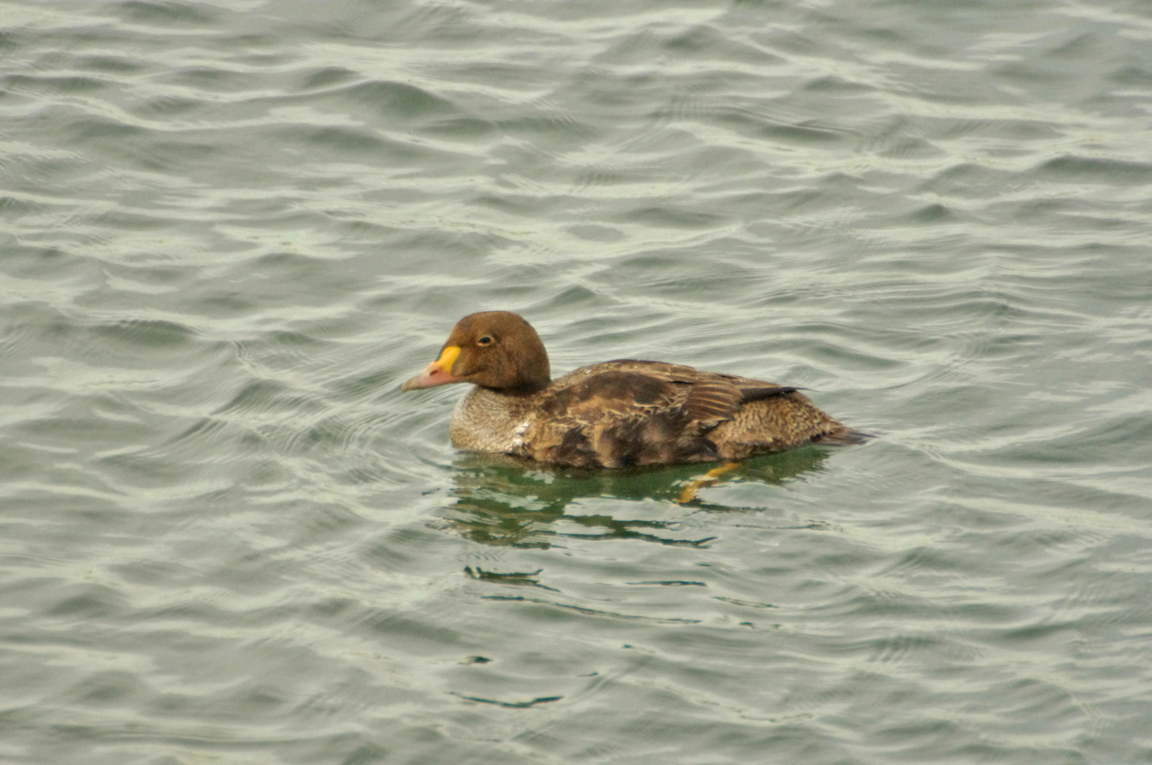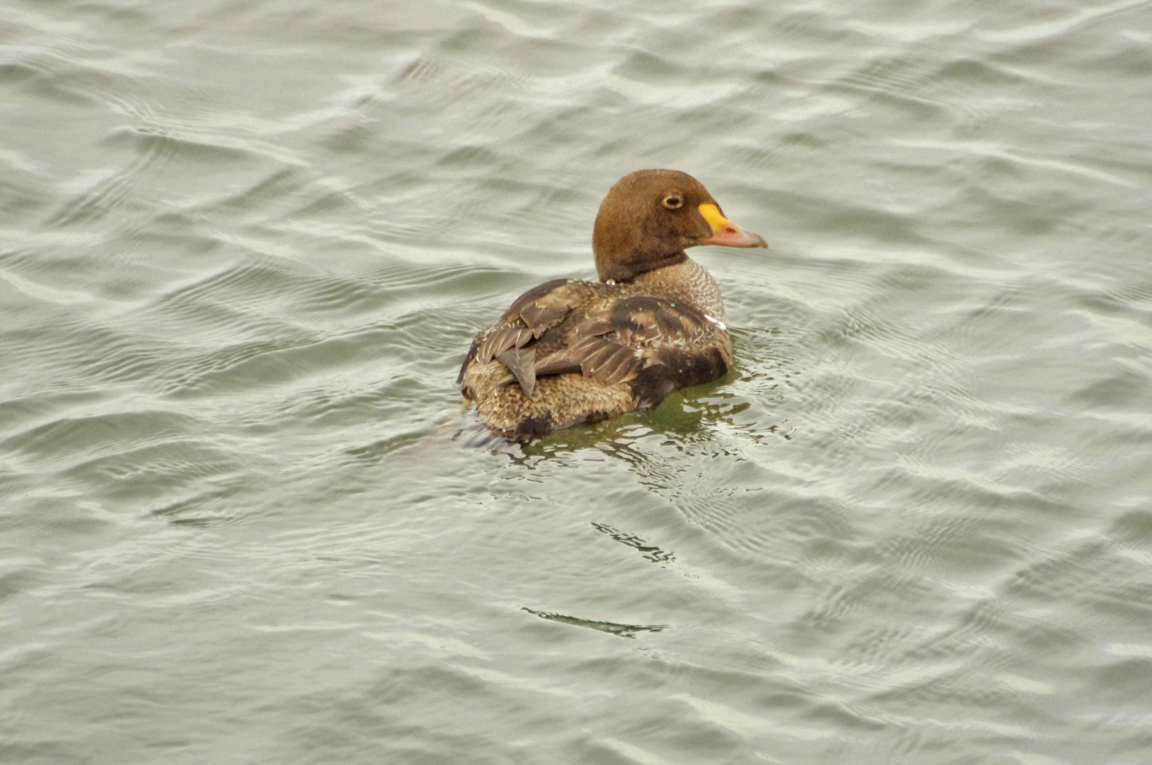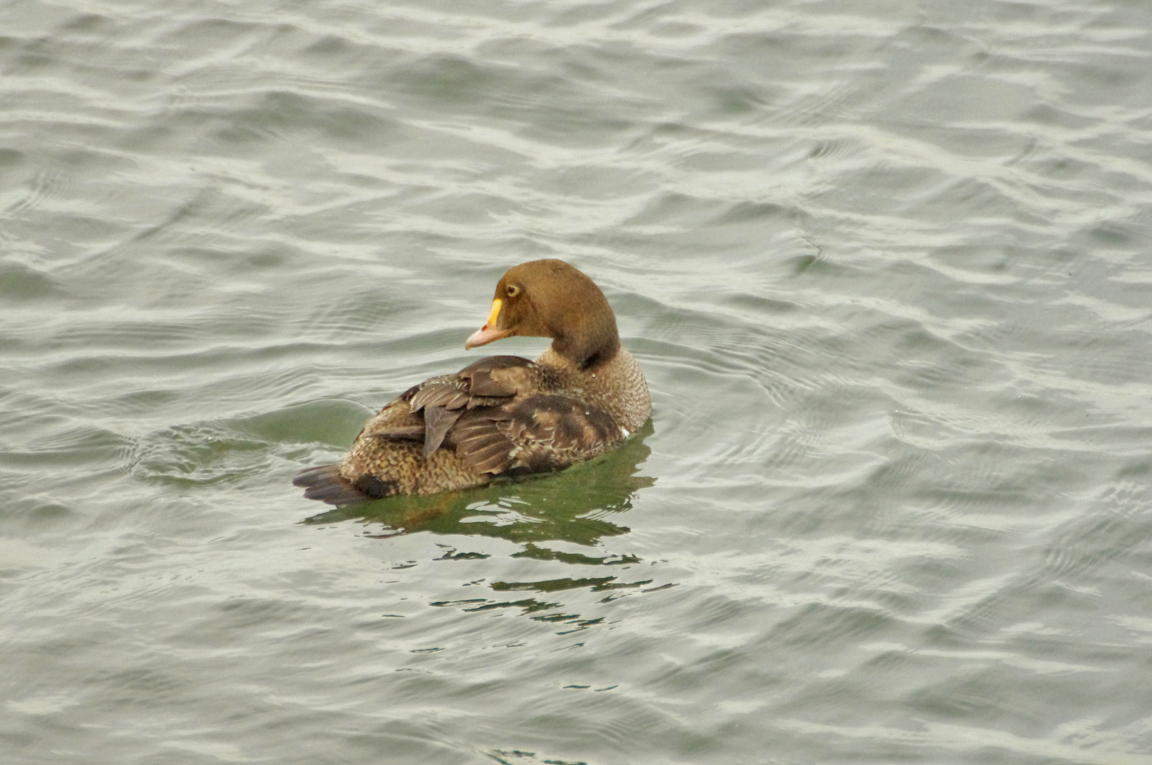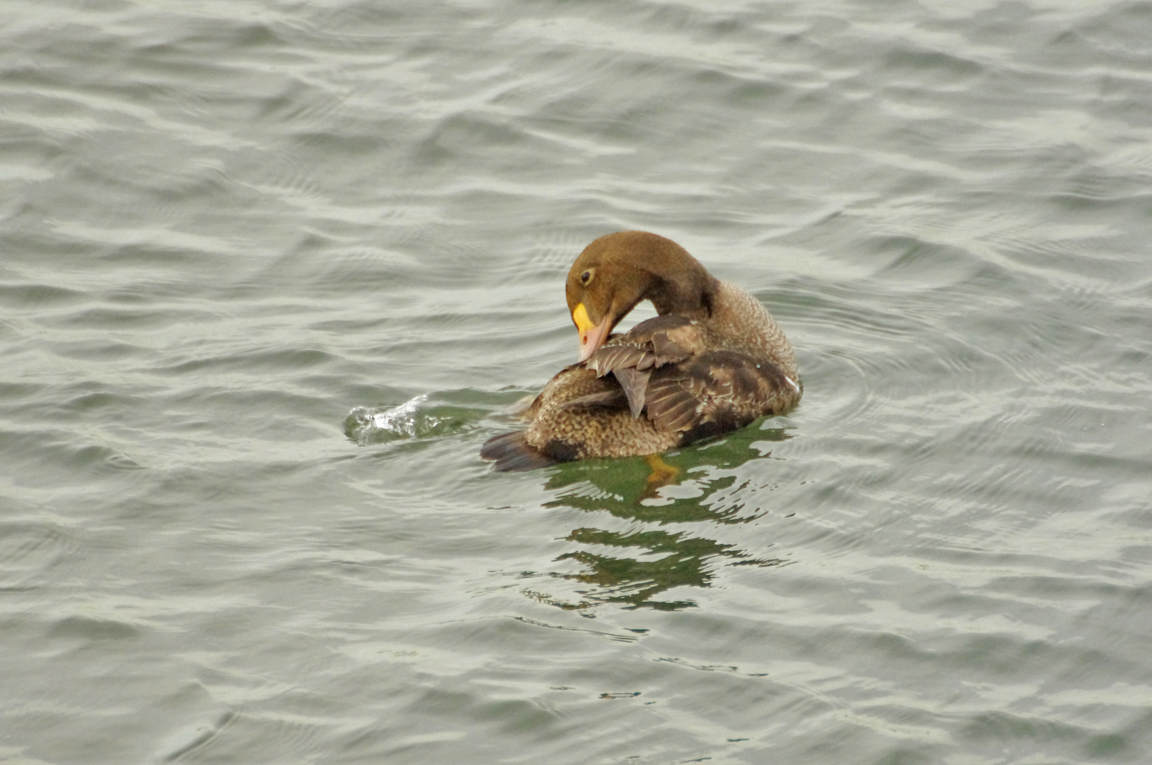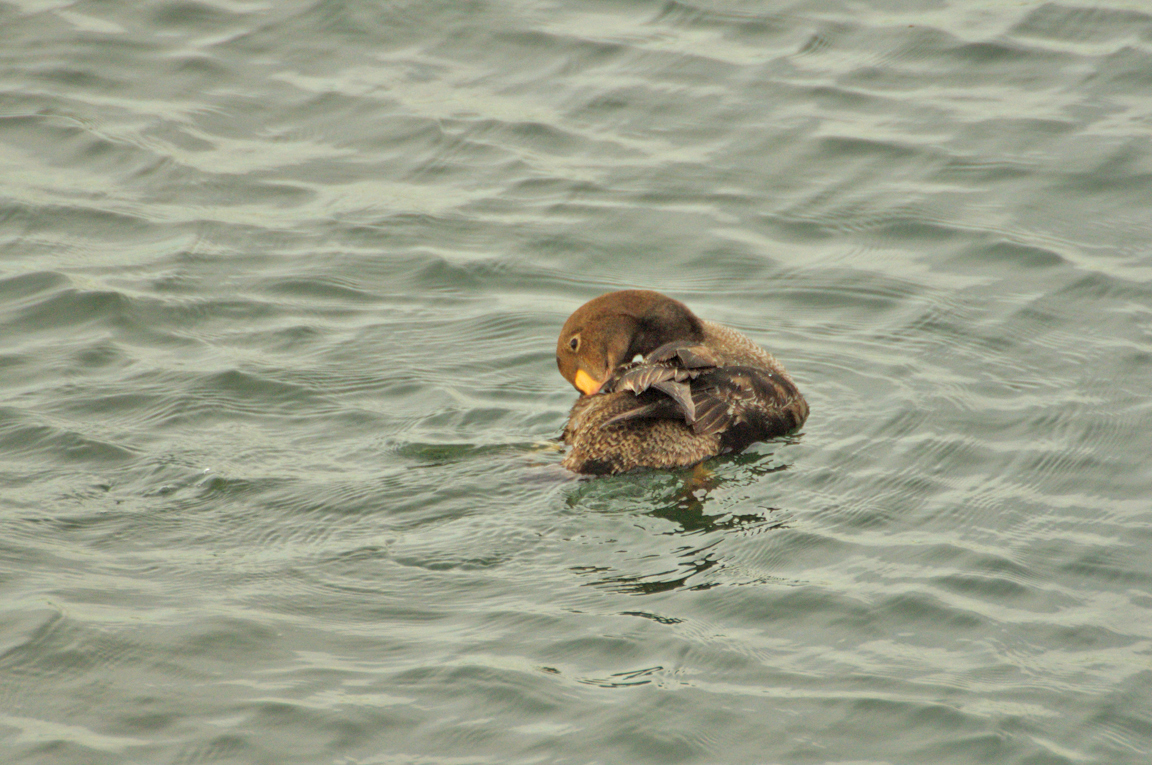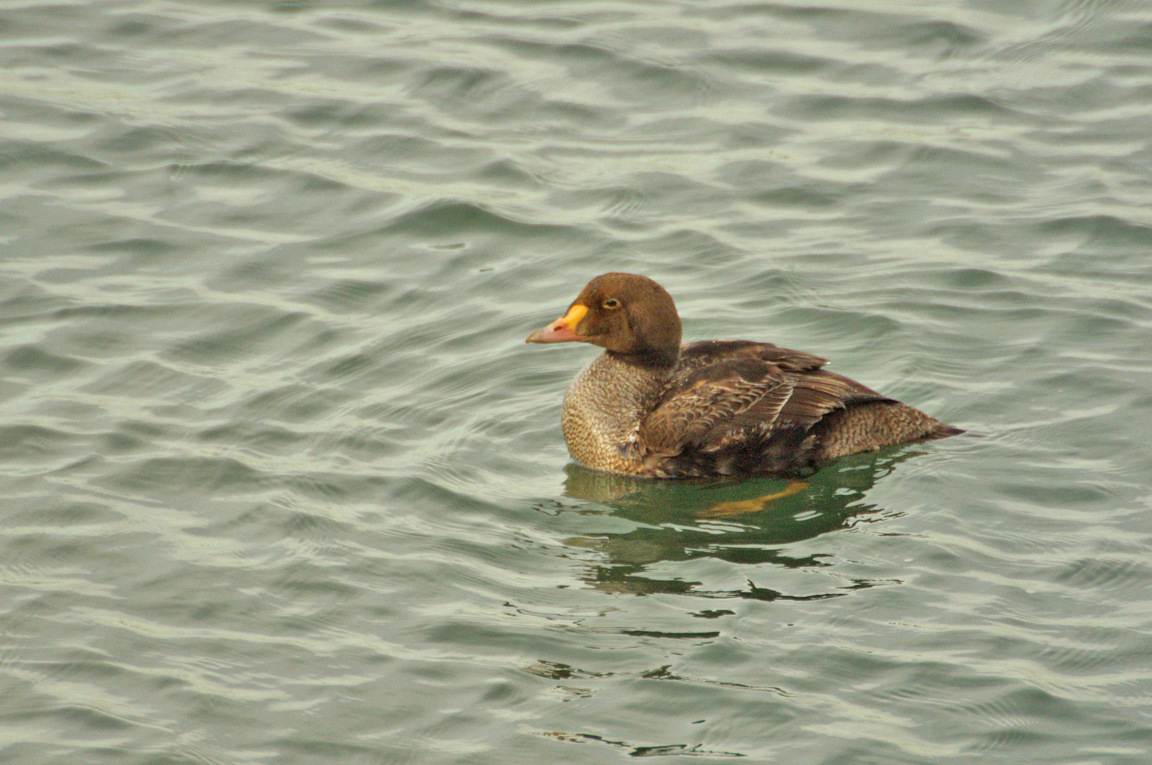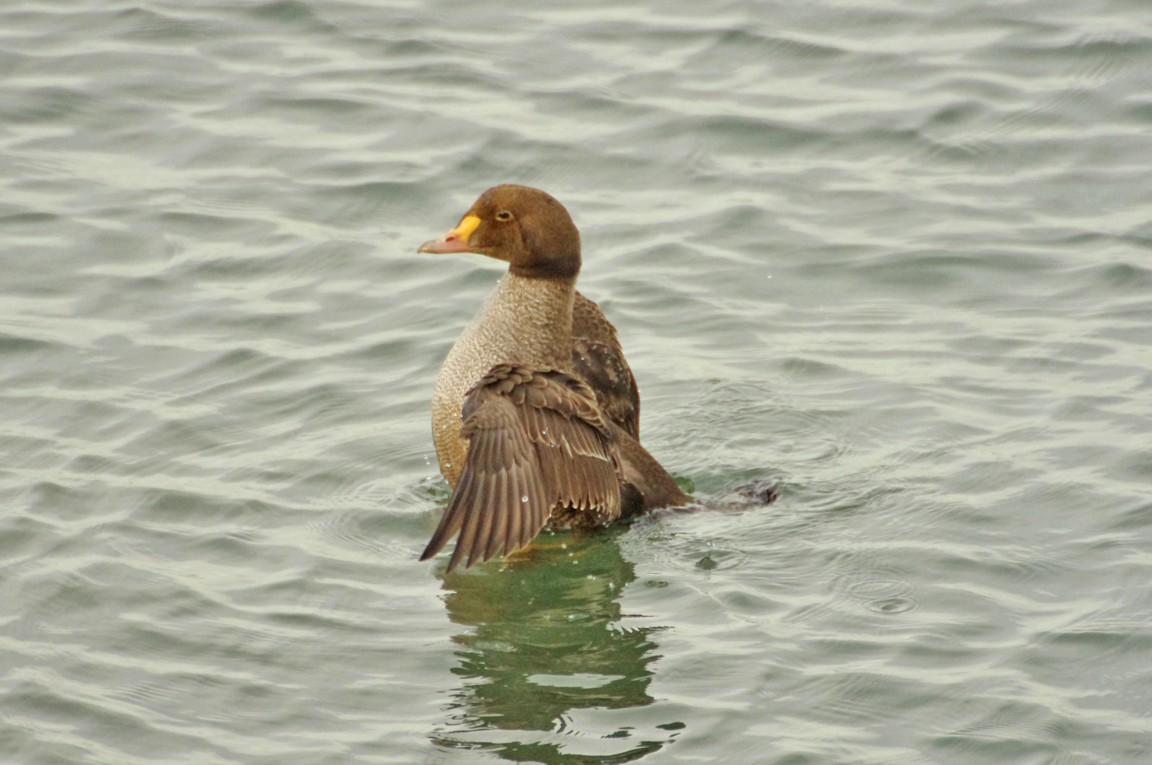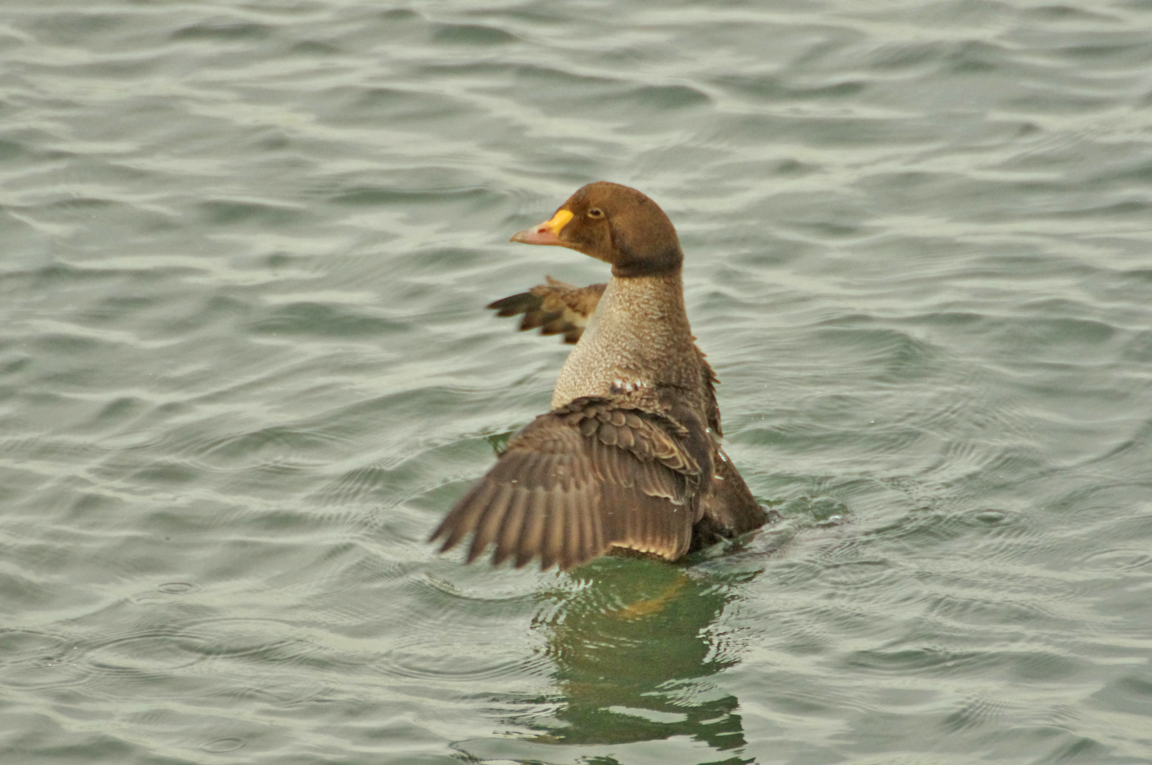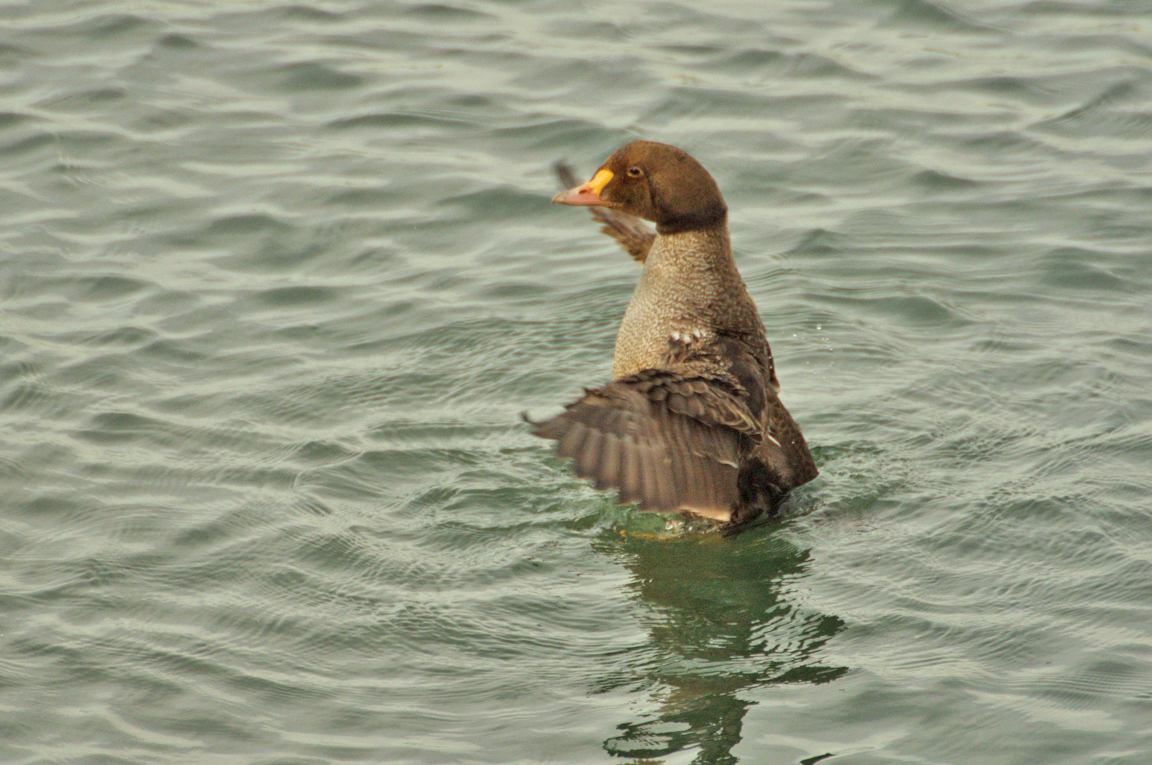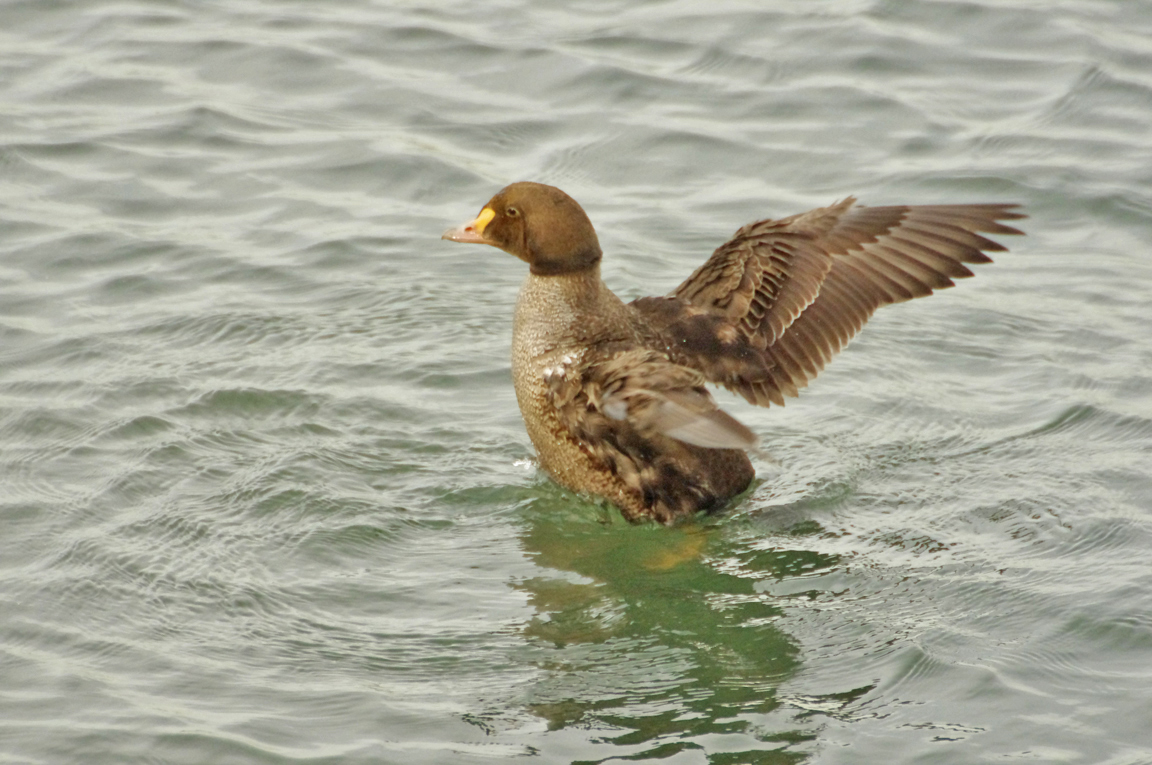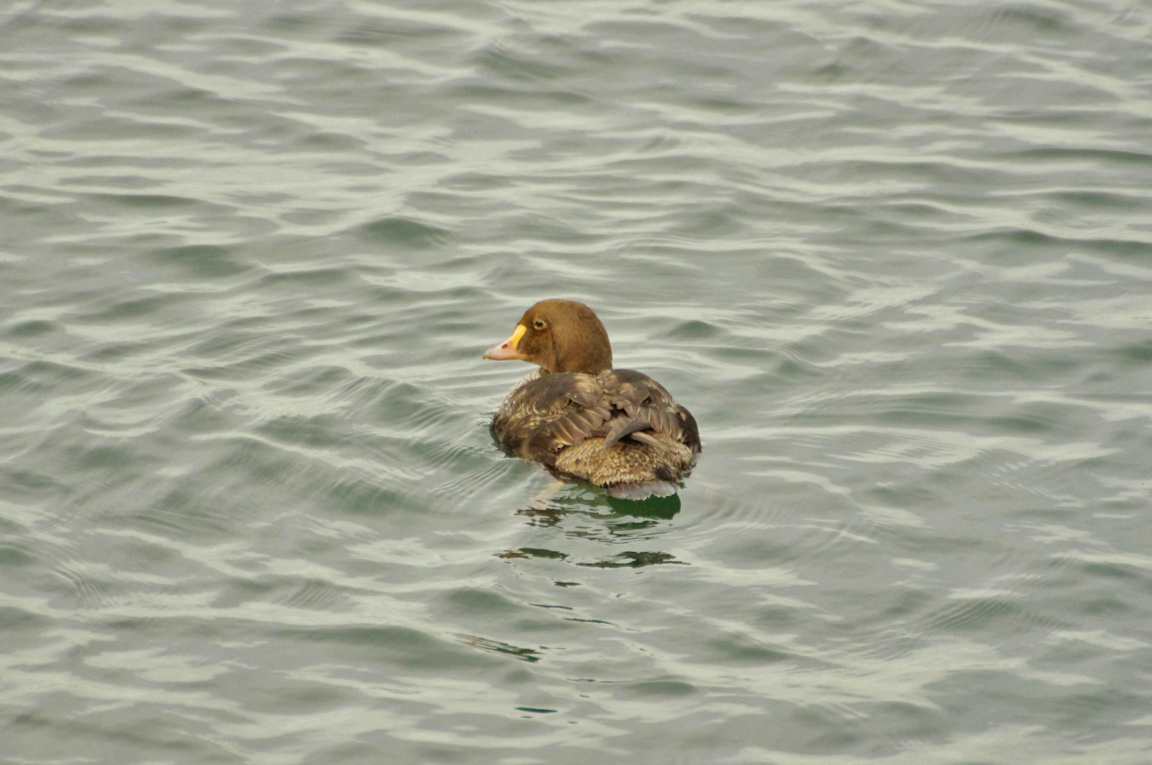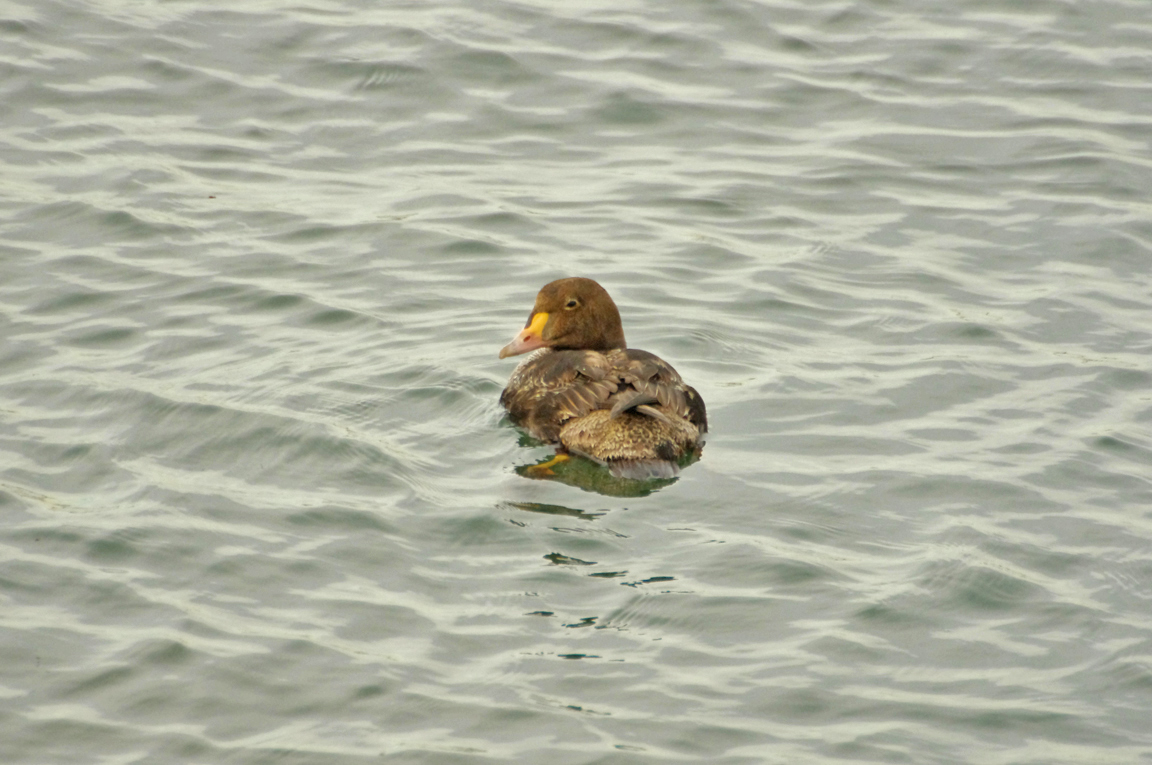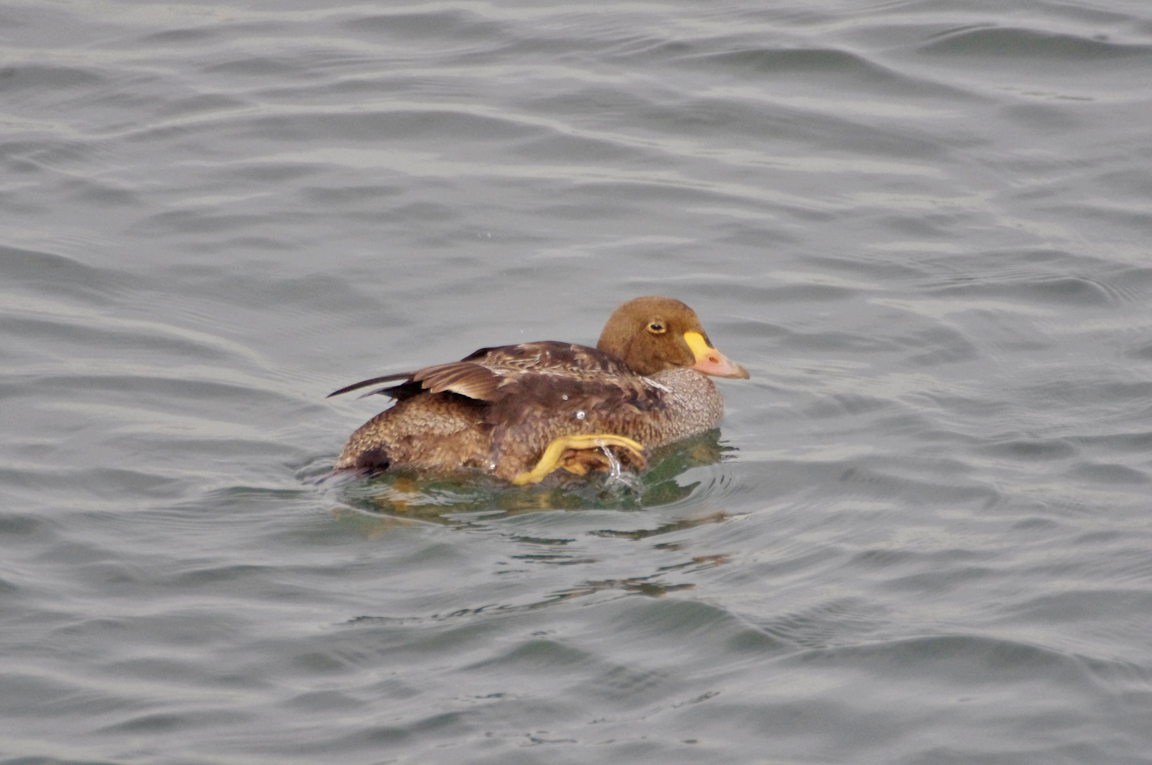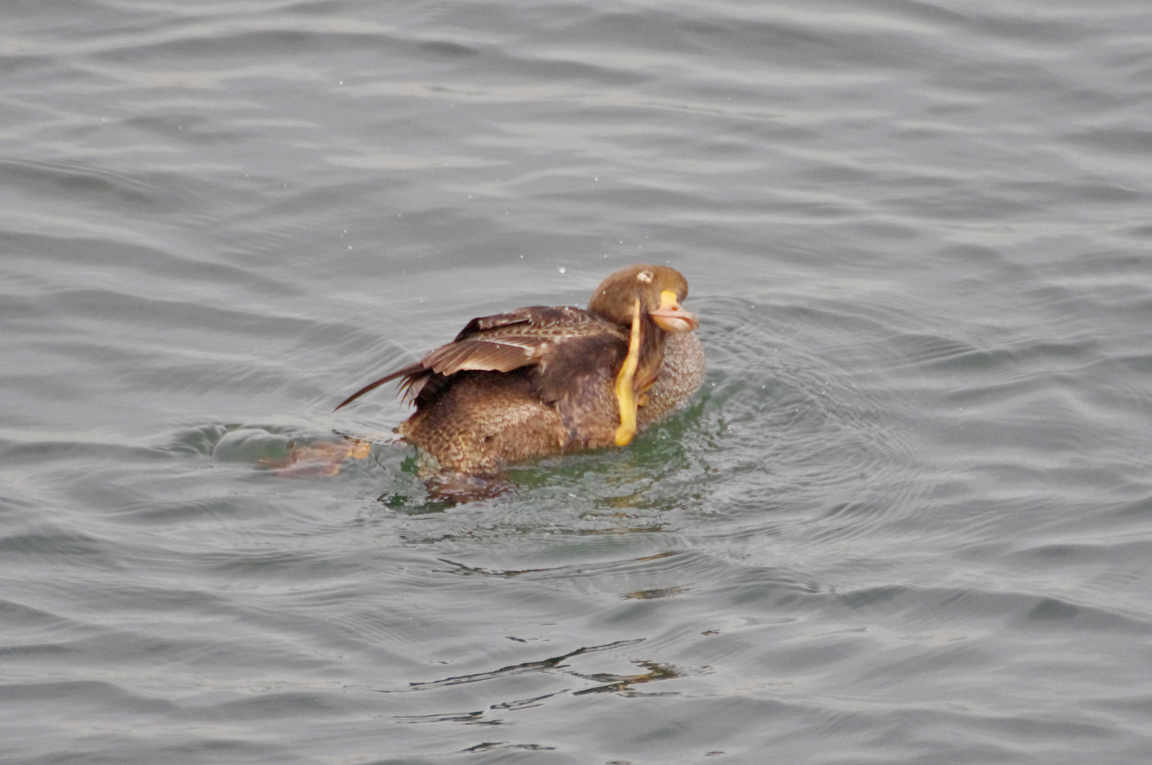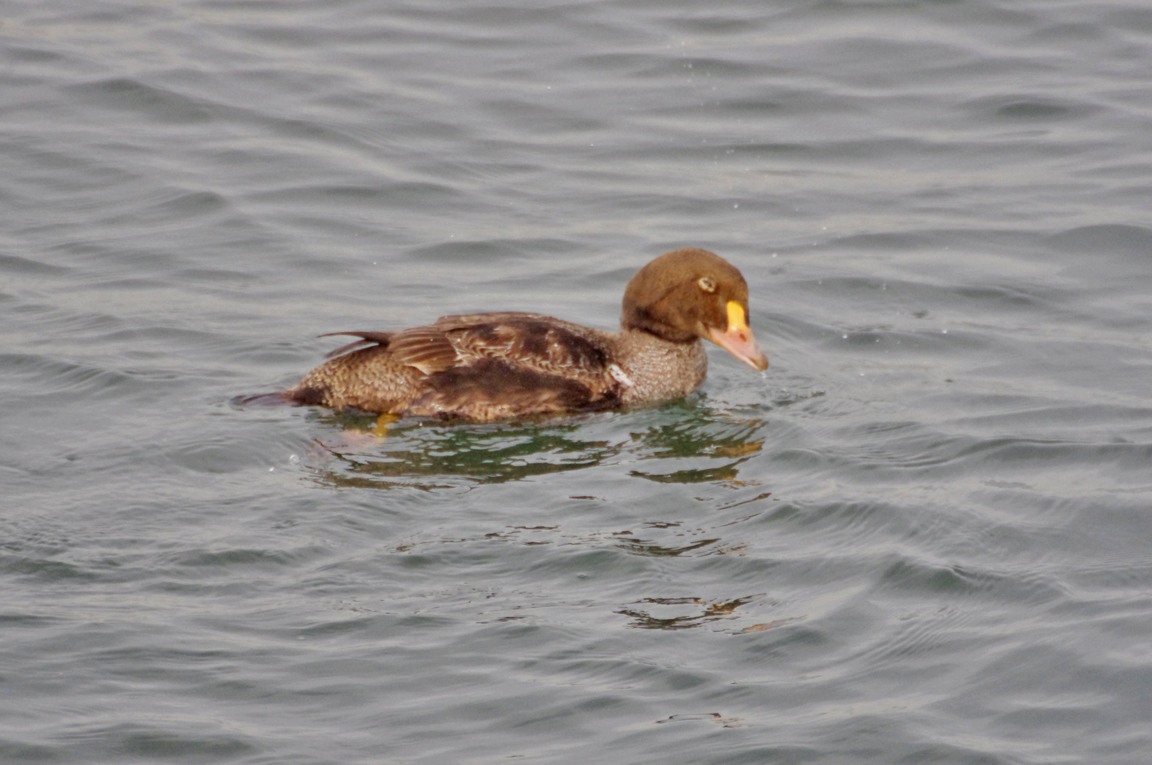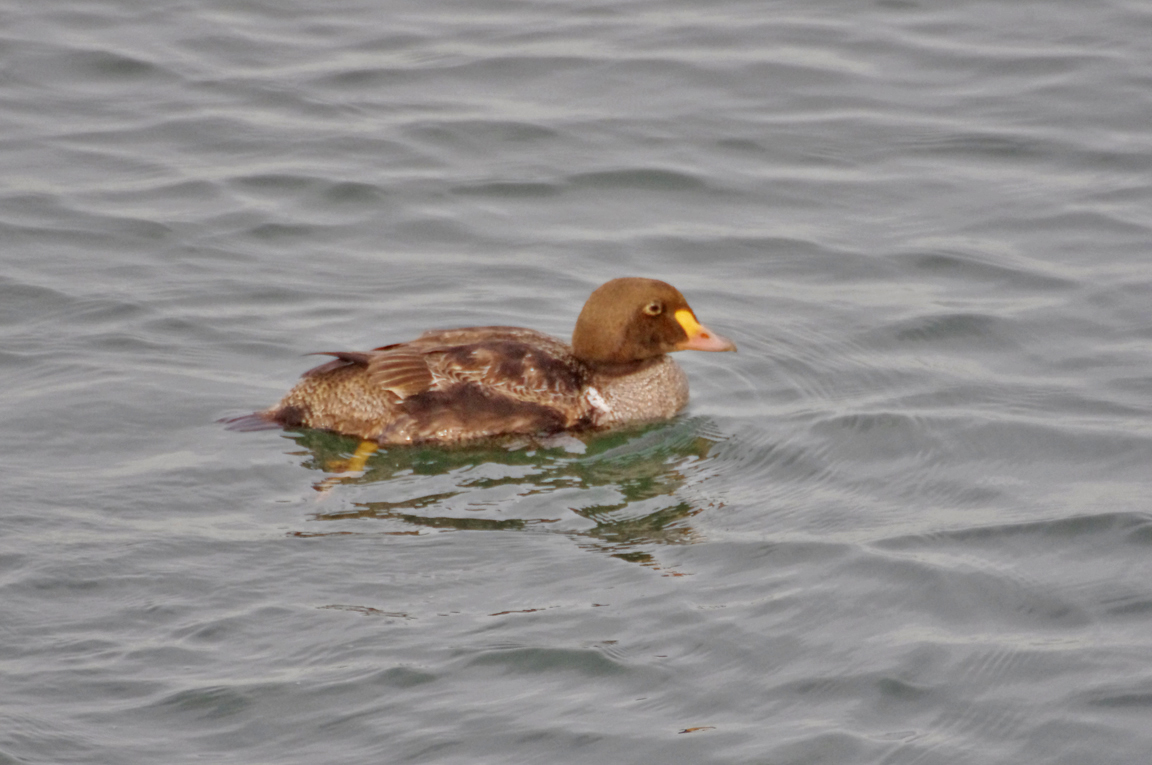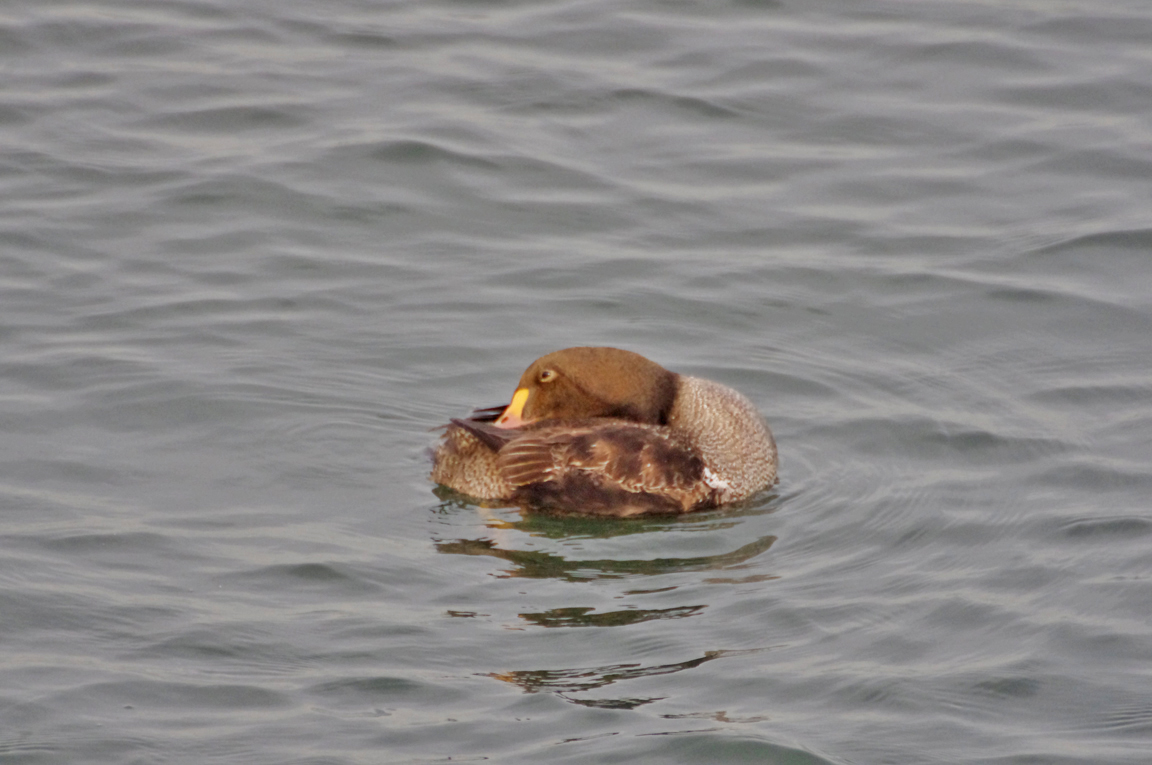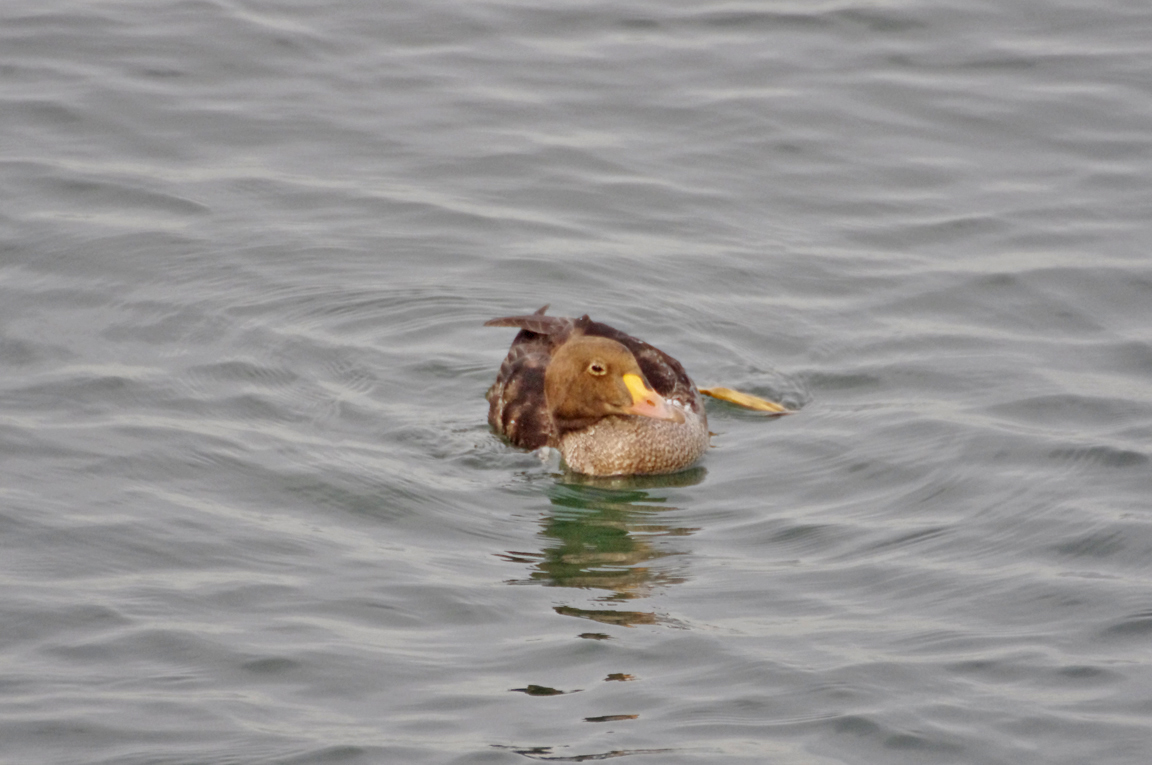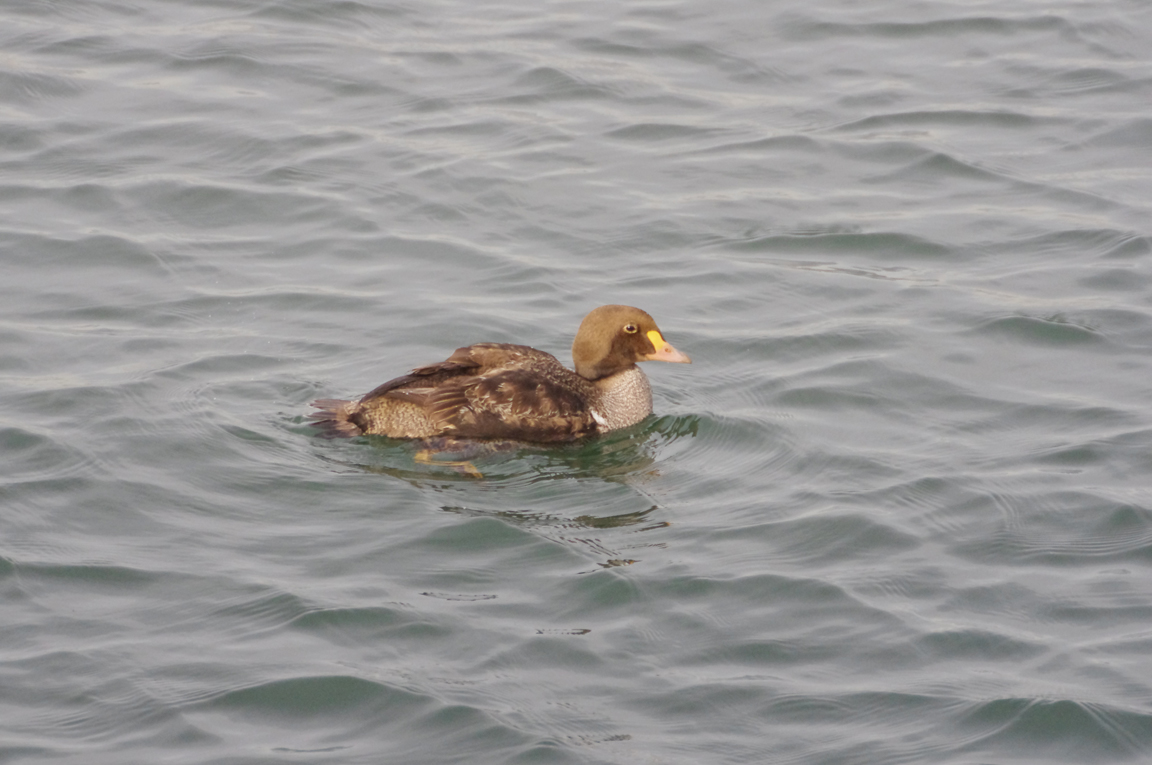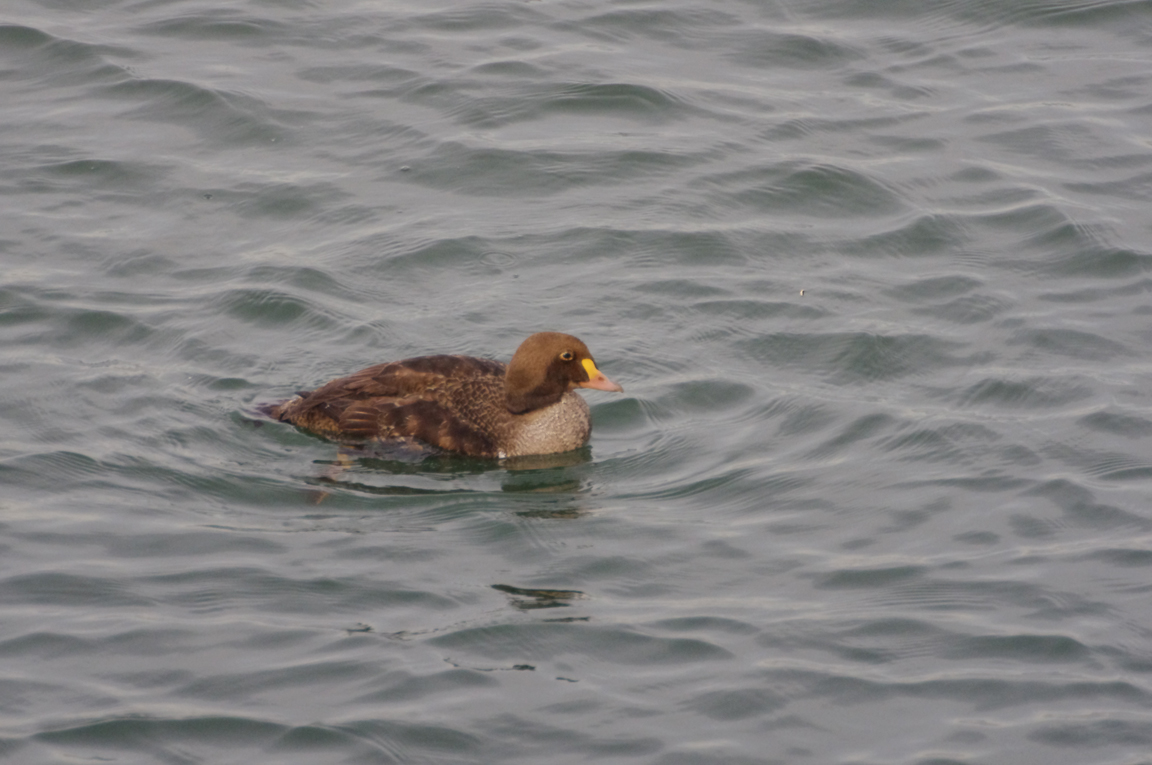|
|
|
 |
King Eider
|
| Somateria spectabilis | |
A large duck of Arctic coastal waters, the King Eider is one of North America's most spectacular waterfowl species. Highly gregarious for most of the year, it forms prodigious flocks during spring migration, sometimes exceeding 10,000 individuals.
Interesting Information
-
The King Eider forages on sea beds up to 25 meters (82 ft) deep.
-
The female King Eider alone attends the nest. When an intruder is present, the female sits low on the nest with her head flattened on the ground. She sits tightly on the eggs and sometimes can be touched or picked up off of the nest.
-
The female King Eider does not feed very often during the 22-24 day incubation period. One female did not leave her nest for seven days before being flushed by an arctic fox.
Description
Adult Description
-
Large, stocky duck.
-
Male bold black-and-white with brightly colored head: black body, white chest, light blue crown and nape, greenish face, and bright red-orange bill with large round orange knob outlined with black.
-
Female brown with black barring.
Sex Differences
Male Description
Breeding (Alternate) Plumage
White neck and chest. Yellowish buff wash over upper breast. Mostly black body. White sides of rump. Large white patches on forewings. Forehead, crown, and nape pearl blue. Cheeks iridescent pale green. Bill bright red with white tip; large yellow or orangish swollen knob at base of upper bill. Feathers stick up as two small triangular black sails on back. Legs bright yellow, with dusky webs and black nails.
Nonbreeding (Basic) Plumage
Resembles female in being brownish, but has blackish wings and white forewing patch. Bill duller than in breeding; lobe smaller and with dark brownish spots.
Female Description
Mostly deep reddish brown, barred with black. Feathers on sides and flanks have black crescent or U-shaped black bars and dark centers. Bill is gray, and not enlarged like the male's, with a rounded edge of feathering at the bill base. Feet greenish gray to yellowish, with dark webs.
Immature
Immature like adult female. First-year male similar to female, but has pale chest, a light eyeline, and an unswollen, orange or yellowish bill.
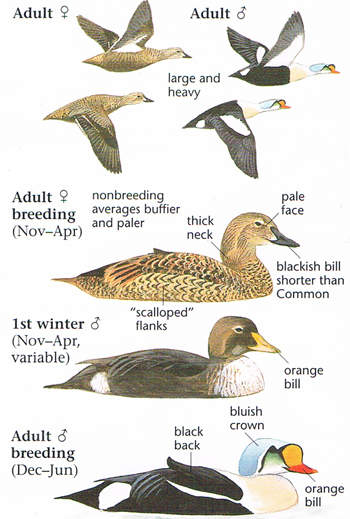
Photo taken from: The Sibley Field Guide by David Allen Sibley
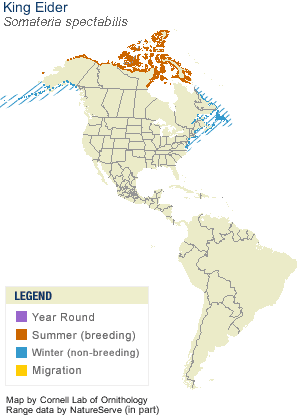
© 2003 Cornell Lab of Ornithology
|
Habitat |
|
Nests in various tundra habitats, generally in low marshy areas. Winters in marine environments near coastlines or on open water shallow enough to allow for foraging at the bottom. |
|
Behavior |
|
During the breeding season, feeds by tipping up, probing, or diving, depending on water depth. In winter, most commonly dives to sea floor to take prey. |
|
Food |
|
Aquatic insect larvae, crustaceans, and plant matter in summer. In winter, feeds on a wide variety of marine animals, including mollusks, crustaceans, and echinoderms, as well as algae. |
Taxonomy
| Kingdom: | Animalia |
| Phylum: | Chordata |
| Subphylum: | Vertebrata |
| Class: | Aves |
| Order: | Anseriformes |
| Family: | Anatidae |
| Subfamily: | Anatinae |
| Genus: | Somateria |
| Species: | Somateria spectabilis |
Similar Species |
|
|
Bird Sound |
|
Male makes a low, soft, somewhat dovelike "croo croo croooo." Female's various vocalizations include croaks and grunts. |
|
Eggs look like this |
|
Photo taken from: ARCTOS Collaborative Collection Management Solution |
